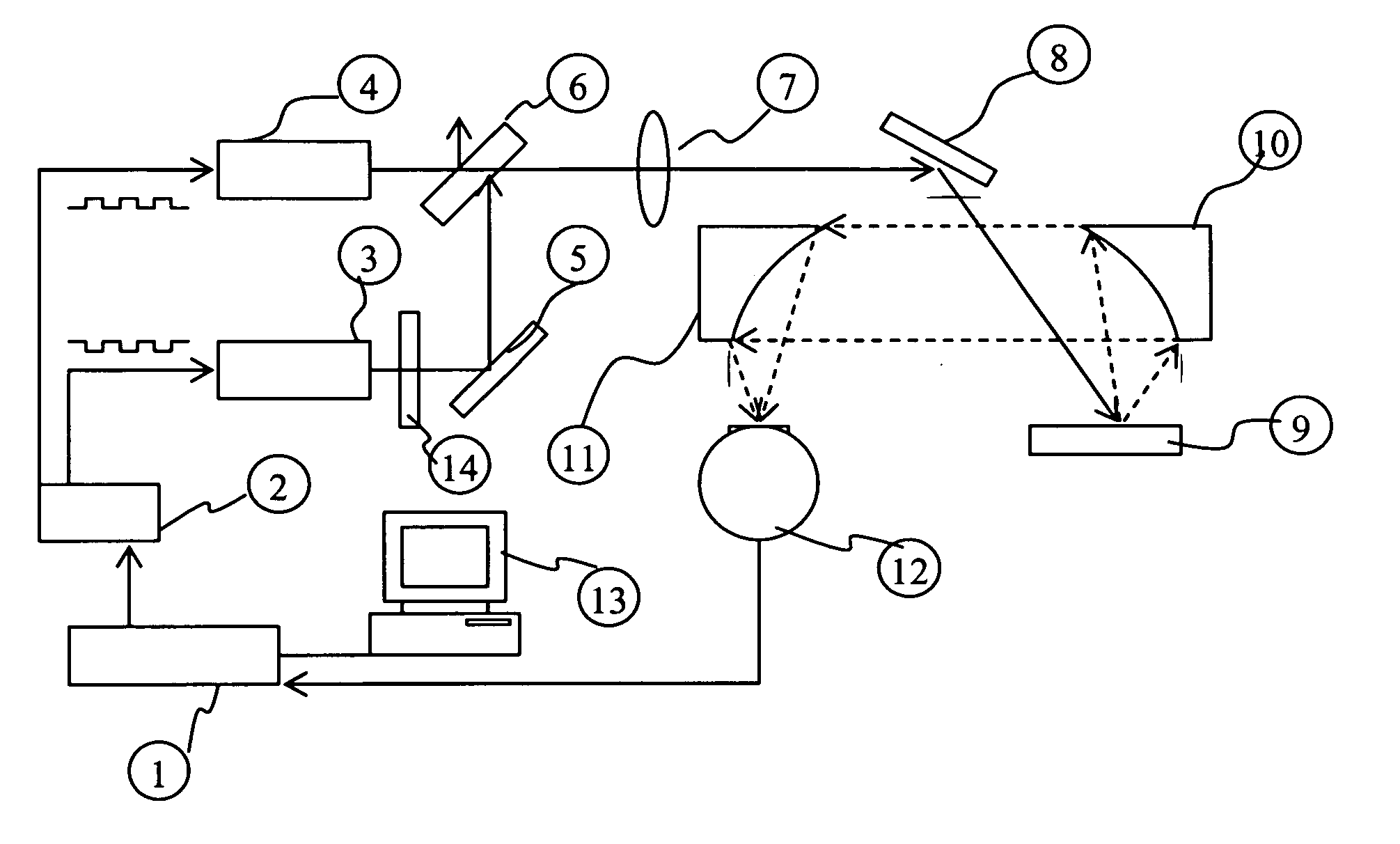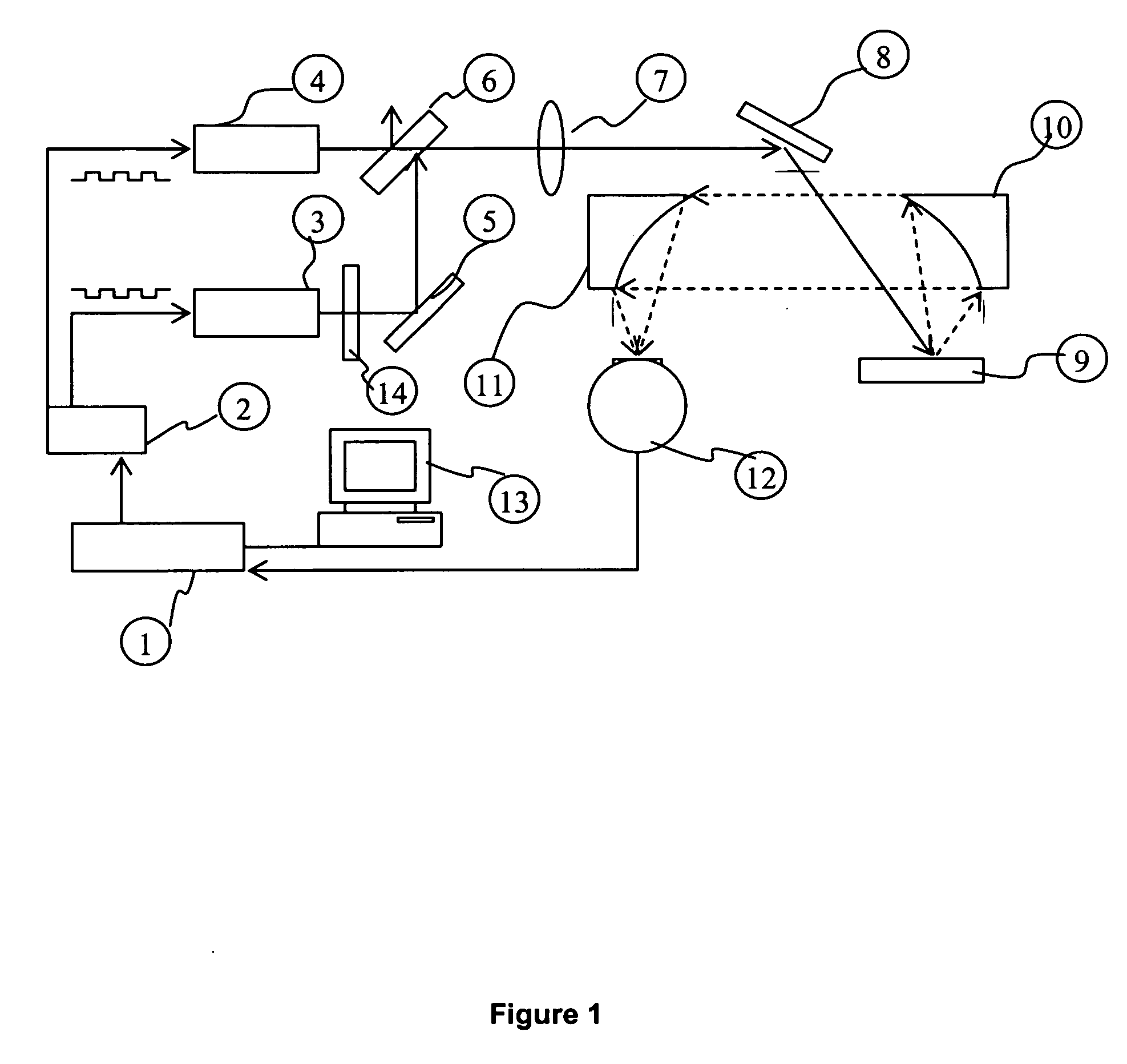Non-invasive biothermophotonic sensor for blood glucose monitoring
a biothermophotonic sensor and blood glucose technology, applied in the field of diabetic patients' blood glucose monitoring monitoring methods and devices, can solve the problems of inability to continuously monitor glucose levels, significant discomfort, pain and infection risk, and the intrinsic high-background absorption coefficient of human tissue glucose monitoring within this spectral rang
- Summary
- Abstract
- Description
- Claims
- Application Information
AI Technical Summary
Problems solved by technology
Method used
Image
Examples
Embodiment Construction
[0022] The present invention provides a device based on non-invasive, non-contacting measurements with differential signal generation methods for real-time baseline corrections, a crucial feature toward precise and universal calibration (independent of person-to-person mid-IR spectral baseline variations, skin and subcutaneous absorption, body temperature or IR-emission variations) in order to offer accurate absolute glucose concentration readings. In addition, spectroscopic baseline suppression, coupled to maximally high signal dynamic range afforded by differential lock-in amplifier detection, is very promising for detection of both hyperglycemia and hypoglycemia.
[0023]FIG. 1 shows an embodiment of the apparatus for non-invasive glucose monitoring, using two specialty low-power (˜200 mW) CO2 lasers 3 and 4. The lasers are operating in tandem and are current-modulated synchronously at modulation frequency f=ω / 2π in the 0.1-10000 Hz range by out-of-phase electrical waveforms genera...
PUM
 Login to View More
Login to View More Abstract
Description
Claims
Application Information
 Login to View More
Login to View More - R&D
- Intellectual Property
- Life Sciences
- Materials
- Tech Scout
- Unparalleled Data Quality
- Higher Quality Content
- 60% Fewer Hallucinations
Browse by: Latest US Patents, China's latest patents, Technical Efficacy Thesaurus, Application Domain, Technology Topic, Popular Technical Reports.
© 2025 PatSnap. All rights reserved.Legal|Privacy policy|Modern Slavery Act Transparency Statement|Sitemap|About US| Contact US: help@patsnap.com



